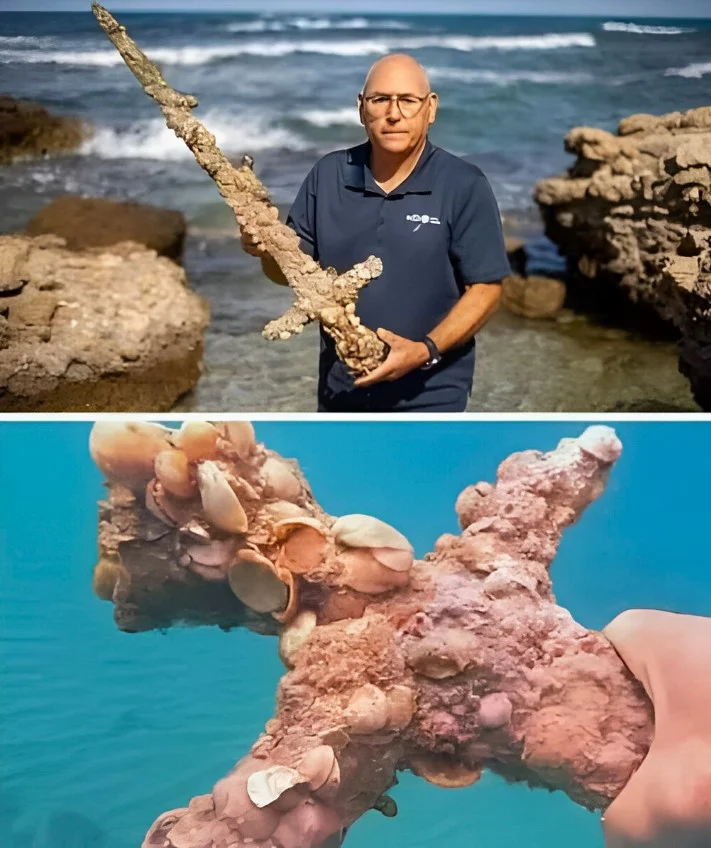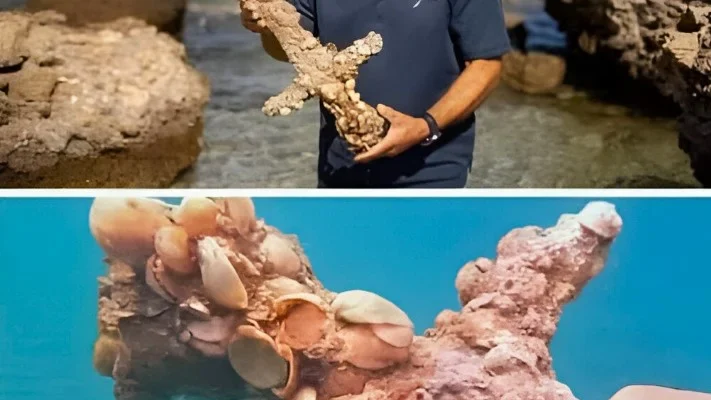What Lies Hidden in the Depths of the Atlantic Ocean?
Stretching from the icy Arctic to the storm-lashed Southern Ocean, the Atlantic is more than a body of water — it is a living bridge between continents, a stage for history, and a frontier of mystery. Beneath its restless waves lie landscapes stranger than imagination: mountains taller than the Alps, trenches deeper than the Grand Canyon, and wrecks that whisper of lost empires. In this 8K cinematic documentary, we journey into the hidden heart of the Atlantic to reveal its secrets.
In October 2021, a recreational scuba diver named Shlomi Katzin stumbled upon an extraordinary piece of history off the coast of northern Israel in the Mediterranean Sea—a 900-year-old sword from the Crusader period. Discovered near Haifa, this nearly 3-foot-long iron weapon, encrusted with centuries of marine life, offers a rare glimpse into the medieval world of knights, battles, and the Crusades. For history buffs and adventure enthusiasts alike, this find is a thrilling connection to the past, sparking curiosity about the knight who once wielded it and the events that led to its resting place on the seabed. This analysis dives into the significance of the discovery, the sword’s remarkable preservation, and its impact on our understanding of the Crusader era, captivating readers with a tale of history brought to life.
The Discovery: A Treasure Beneath the Sea
Shlomi Katzin’s discovery off the coast of Haifa is nothing short of remarkable. While scuba diving, he spotted a sword partially buried in the seabed, covered in layers of sand, shells, and marine life. Measuring nearly 1 meter in length, the iron blade was identified as a relic from the Crusader period, dating back to the 11th to 13th centuries. This was a time when European knights embarked on religious and military campaigns in the Holy Land, leaving behind a legacy of conflict and cultural exchange. The sword’s discovery near a historic coastal route suggests it may have belonged to a knight involved in a naval skirmish or accidentally lost during travel. Its survival for over 900 years underwater is a testament to the unique conditions of the Mediterranean seabed, where layers of sand acted as a natural shield against corrosion.
A Window into Crusader Warfare
The sword offers more than just a stunning artifact—it provides historians with valuable insights into the Crusader era. The Crusades were a series of religious wars that shaped the medieval world, involving intense battles between Christian and Muslim forces in the Eastern Mediterranean. This weapon, likely wielded by a knight, is a tangible link to those turbulent times. Advanced imaging techniques, such as X-ray scanning, revealed a bent blade beneath the encrusted surface, hinting at damage sustained in combat before it was lost to the sea. Unlike many medieval weapons that were melted down or repurposed, this sword’s intact condition makes it a rare find. Its design and craftsmanship reflect the military technology of the time, offering clues about the tools knights used to wage war and defend their beliefs.
Preservation and Scientific Analysis

The sword’s remarkable preservation is a key factor in its historical value. Encased in sand and marine life, it avoided the corrosion that typically destroys iron artifacts over centuries. Archaeologists employed cutting-edge techniques to study the sword without damaging it. X-ray scans allowed experts to examine the blade’s condition beneath the hardened crust, revealing its bent shape and confirming its age. This non-invasive approach ensured the artifact remained intact for future study and display. The conservation process, currently underway, involves carefully removing marine encrustations to restore the sword’s appearance while preserving its structural integrity. Once completed, the sword will be displayed publicly, allowing fans of history to connect with a piece of the Crusader past.
Historical and Cultural Significance
The discovery of the Crusader sword sheds light on the movements and presence of Crusader forces along the northern coast of Israel. Haifa, a strategic coastal city, was a hub of activity during the Crusades, serving as a key point for trade and military operations. The sword’s location suggests it may have been lost during a naval conflict or a knight’s journey along the coast, offering historians a chance to map Crusader activities in the region. Beyond its military significance, the artifact provides a glimpse into the daily life of a medieval knight, from the weapons they carried to the challenges they faced. For modern audiences, it serves as a bridge to a dramatic chapter in history, bringing the stories of the Crusades to life in a way that resonates with both scholars and casual fans.
A Legacy for Future Generations
The sword’s journey doesn’t end with its discovery. Its upcoming public display will make it a cultural and educational treasure, allowing people to engage with a tangible piece of the past. Museums and exhibits featuring such artifacts inspire awe and curiosity, encouraging visitors to explore the complexities of the Crusader period. The sword’s story—found by a recreational diver, preserved by the sea, and meticulously studied by experts—captures the imagination, reminding us of the countless untold stories waiting to be uncovered. For fans on platforms like Facebook, this discovery is a call to celebrate the intersection of adventure, history, and science, sparking conversations about the enduring legacy of the Crusades.
Shlomi Katzin’s discovery of a 900-year-old Crusader sword is a breathtaking moment that connects us to the knights and battles of the medieval world. This well-preserved artifact, found off the coast of Haifa, offers historians and fans alike a rare opportunity to explore the Crusader era through a tangible relic. Its bent blade and marine-encrusted surface tell a story of combat, loss, and survival, while advanced imaging techniques unlock its secrets without compromising its integrity. As the sword undergoes conservation for public display, it promises to inspire awe and curiosity, inviting us to reflect on the Crusades’ lasting impact. For history enthusiasts, this find is a reminder that the past is never truly lost—it’s waiting to be rediscovered, one dive at a time.



